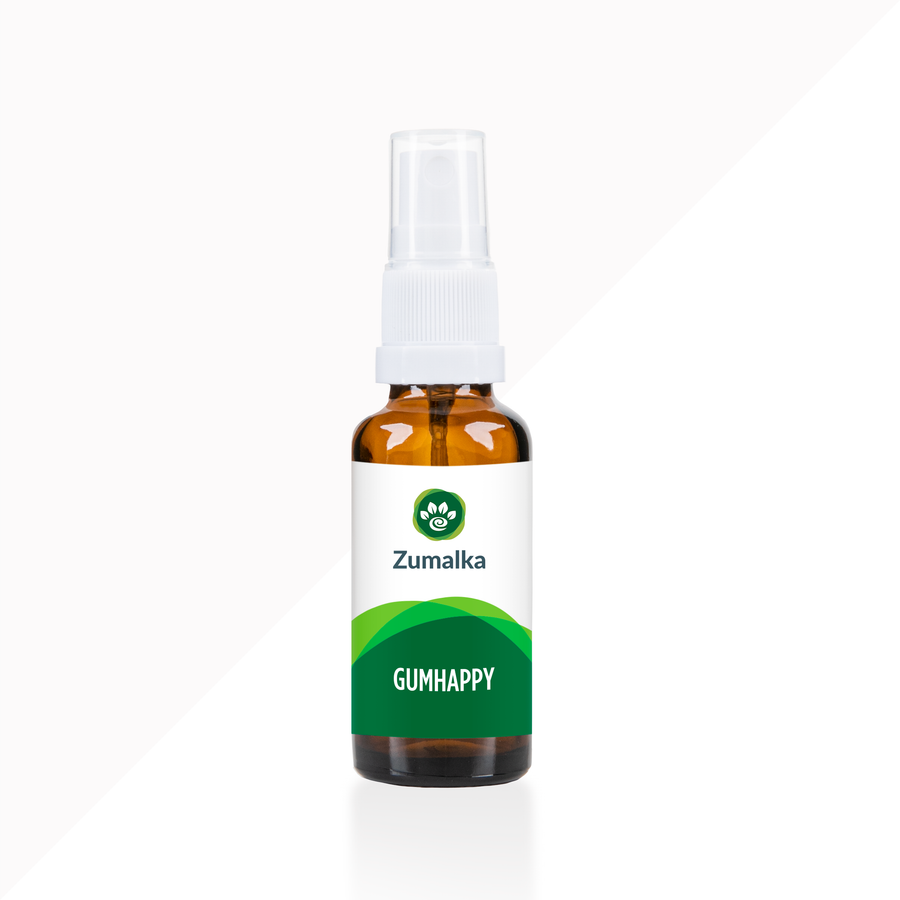Vet-Explained: Dog Gum Colors and What They Mean for Your Pet's Health
Picture this: You're enjoying a cozy cuddle session with your dog when you suddenly notice their gums look slightly different in color. Your pet seems perfectly fine otherwise, but should you be concerned? Let’s take a closer look at what this could mean.
Did you know that your dog's gums have their unspoken language? Their color can reveal important insights about your pet’s health and well-being. In this article, we’ll guide you through everything you need to know.
What Do Healthy Dog Gums Look Like?

The standard for healthy dog gums is a noticeable salmon pink or bubblegum pink hue. This color indicates proper oxygenation and circulation, healthy moisture levels, and a smooth texture.
However, some dogs naturally have gum colors that vary with age and breed. Puppies may have lighter gums, while older dogs may develop a darker shade. Certain breeds even have spotted or pigmented gums, which is perfectly normal. This pigmentation can appear as dark brown, blue, or black.
Examples of these breeds include the Akita, Belgian Malinois, Black-Mouthed Cur, Chow Chow, black-coated Cocker Spaniel, Dalmatian, black or sable-coated German Shepherd, Golden Retriever, Labrador Retriever, Newfoundland, Rottweiler, and Shar Pei.
Although these breeds typically have pigmented or spotted gums, they should still have pink areas for proper assessment and evaluation.
How to Check Your Dog's Gum Color
Checking your dog’s gum color isn’t a complicated process. You just need to focus on a few key points to ensure the experience is as gentle and comfortable as possible for you and your dog. Here’s what to keep in mind:
#1. Keep your dog calm and comfortable.
Successfully checking your dog’s gums depends on one crucial factor: keeping them as relaxed as possible. If they’re tense, they may become fussy and impatient. Choose a familiar, comfortable location or surround them with their favorite toys and objects.
#2. Lift your dog’s lip slowly and gently.
Whether you start with the upper or lower lip, lift it as slowly and gently as possible. This not only prevents startling your dog but also helps them ease into the process. Additionally, avoid having long fingernails to prevent accidental scratches or injuries to your dog's lips and gums.
#3. Assess the color, moisture, and overall condition of the gums.
Start by examining your dog’s gum color, ensuring it matches the standard we discussed earlier. Additionally, check for dryness, cracks, or any other irregularities. Healthy gums should be moist and smooth, so any unusual texture or discoloration may indicate an underlying health issue.
#4. Perform a Capillary Refill Test (CRT).
This may sound technical, but it's a simple pressure-and-release test to check circulation. Lightly press your finger on the gums for about two seconds, then release. Observe how quickly the pink color returns and measure the time it takes to reappear.
Your dog has a normal CRT if the pink color returns within 1 to 2 seconds. A CRT longer than 2 seconds may indicate dehydration, shock, heart disease, or poor circulation. In some cases, a CRT of less than 1 second may be associated with fever or high blood pressure.
Checking your dog’s gums regularly is an important part of their health care. You can incorporate it into your weekly grooming routine or during cuddle time. Ideally, this should be done at least once every week or two.
What Do Different Dog Gum Colors Mean?

Now that we've covered how to check your dog's gums, let's explore what their color can reveal about their health. In this section, we'll discuss the potential underlying health issues and when it's time to seek professional help.
Pale gums in dogs can indicate anemia or poor circulation.
If your dog's gums appear pale or white, it may be a sign of:
- Anemia (a deficiency of red blood cells)
- Poor circulation
- Toxin ingestion
- Internal bleeding/blood loss
- Kidney disease
- Shock
- Immune disorders
- Parasites
If your pet has anemia, the RBC+ OPTIMAL KIT is a premium natural kit that may help. It supports healthy hemoglobin levels, promotes red blood cell production, and enhances overall blood quality. Additionally, the RBC+ OPTIMAL KIT helps maintain energy levels and supports the normal formation of new cells.
Blue gums in dogs may indicate a lack of oxygen.
Also known as cyanosis, blue or purple gums in dogs can indicate insufficient oxygen. This discoloration is often associated with low blood pressure, asthma, hypothermia, pneumonia, airway blockages, heart disease, and other respiratory issues.
Red gums in dogs may indicate infection or inflammation.
Red gums in dogs often indicate an infection—most commonly gingivitis—an inflammation, or increased blood flow. In many cases, the gums may also appear swollen. Other possible causes include toxin ingestion and heatstroke.
Red gums in dogs are often a sign of dental disease or inflammation, but bright red or cherry-colored gums may indicate a medical emergency. This could be caused by shock, heatstroke, carbon monoxide poisoning, or high blood pressure. If you observe this, seek veterinary care immediately.
Yellow gums in dogs may be a sign of liver disease or red blood cell breakdown.
Yellow gums in dogs may result from icterus or jaundice, often caused by liver disease. This discoloration can also indicate red blood cell destruction. Other potential causes include bile duct obstruction, blood parasites, leptospirosis, and cancer.
If your pet has liver problems, consider using HEPATOPET. This premium natural product supports liver function, stimulates enzyme activity to promote liver cell growth, and helps prevent damage while fighting bacteria and viruses. HEPATOPET provides a gentle and holistic approach to liver support.
Brown gums in dogs may signal issues with oxygen absorption.
Some dog breeds, like the Shar Pei and Chow Chow, naturally have brown or black gums. However, in dogs without this pigmentation, it may signal a health issue. Consult a veterinarian or a pet homeopathy specialist to rule out underlying conditions.
What are Other Signs of Unhealthy Gums to Watch For?
Aside from your dog’s gum color, there are other important signs to be aware of, including:
- Tacky or dry gums (possible sign of dehydration)
- Receding gums
- Bad breath (halitosis)
- Excessive drooling or difficulty eating
- Ulcers on the gums
- Swollen gums
- Bleeding gums
- Gum overgrowth
- Lumps, bumps, or abnormal growths
- Pawing at their mouth
Why is Proactive Dental Care Essential for Healthy Dog Gums?

Just like any other part of your dog’s body, maintaining healthy gums requires regular care and consistency. In this section, we’ll share simple, hassle-free tips to keep your dog’s gums in optimal condition:
1. Proper dental hygiene is essential for your dog’s health.
Proper dental care is often overlooked by dog owners, yet it’s crucial for their pet’s overall health. Brushing and cleaning your dog’s teeth and gums regularly isn’t enough—it must be done thoroughly. Seeking advice from a veterinarian or pet homeopathy specialist ensures the best approach to maintaining oral hygiene.
Scheduling regular checkups and professional cleanings can help prevent gum issues like gingivitis and periodontitis, ensuring your dog’s oral health stays in great condition.
2. Regular tooth brushing is essential for your dog’s health.
Brushing your dog’s teeth regularly removes buildup from the gums, preventing potential health issues. Be sure to use a dog-safe toothpaste and brush gently yet thoroughly. While daily brushing is ideal, doing it at least three times a week is a good alternative.
3. Proper hydration is essential for maintaining healthy dog gums.
Proper hydration is key to your dog’s overall health, including their gums. It aids in nutrient transport, stimulates saliva production, and helps prevent dry mouth and bad breath—both of which can signal gum disease.
To keep your pet’s mouth healthy, make sure they always have access to fresh, clean water. Remember, "fresh" means completely replacing the water, not just topping it up. To encourage your dog to drink more water, place multiple water bowls around the house—especially near their favorite resting spots—for easy and frequent access.
4. A balanced diet helps support healthy gums.
A well-balanced diet is key to maintaining your dog's gum health, providing essential nutrients like vitamins C and E to reduce inflammation and strengthen gum tissue. Proper nutrition also supports a strong immune system helping your dog fight off infections such as gingivitis and periodontal disease more effectively.
Additionally, the texture of certain foods, like kibble, can help reduce plaque buildup naturally, promoting healthier gums. Make sure your dog has constant access to fresh water, as dry kibble contains only 6–10% moisture and can contribute to dehydration if not balanced with proper water intake.
5. Dental chews and toys can provide additional support for healthy gums.
Dental chews and toys help support healthy gums by reducing plaque buildup and promoting oral hygiene. Chewing stimulates saliva production, which naturally helps wash away bacteria and food particles.
Interestingly, dental-friendly toys can make oral care feel like playtime, encouraging regular use and supporting long-term gum health.
When Should You Call the Vet for Your Dog’s Unhealthy Gums?
Unusual changes in your dog’s gum color or other signs of gum disease should be taken seriously and may require a visit to the veterinarian or a pet homeopathy expert. Identifying issues early can help prevent more severe oral health problems in the future.
Routinely checking your dog’s gums helps you spot potential concerns before they worsen. Taking a proactive approach is always the best way to support your pet’s overall well-being.
FAQs
What color are a sick dog's gums?
A sick dog’s gums may appear pale, white, blue, bright red, or yellow, indicating potential health issues like anemia, poor circulation, infection, or liver disease. Always consult a veterinarian or a pet homeopathy expert for proper diagnosis and care.
What color are dogs gums when they have poisoning?
A poisoned dog’s gums may appear pale, white, blue, or bright red, indicating shock, oxygen loss, or internal bleeding. Seek immediate veterinary care, as prompt treatment is essential to prevent severe complications or fatal outcomes.
What color are dogs' gums when dehydrated?
A dehydrated dog's gums may appear dry, sticky, pale, or bright red due to reduced or increased blood flow and moisture. Bright red gums indicate increased blood flow, while pale gums suggest decreased blood flow and possible circulatory issues. Immediate hydration and veterinary care are essential to prevent serious health complications.
What do infected dog gums look like?
Infected dog gums often appear red, swollen, or purple and may bleed easily. Other symptoms include bad breath, pus, and receding gums. Prompt veterinary care is essential to prevent further infection and dental disease.
What color are parvo gums?
A dog with parvo may have pale, gray, or white gums, indicating severe dehydration, shock, or blood loss. Other symptoms include lethargy, vomiting, and diarrhea. Immediate veterinary treatment is critical to improve survival chances.
What color are unhealthy gums in dogs?
Unhealthy dog gums may appear pale, white, blue, bright red, or yellow, signaling anemia, poor circulation, infection, or liver disease. Monitoring gum color and consulting a veterinarian or pet homeopathy expert can help prevent serious health issues.
What are the signs of parvo in a dog?
Signs of parvo in dogs include bloody diarrhea, vomiting, fever, lethargy, dehydration, and loss of appetite. Pale gums and weakness may also occur. Immediate veterinary treatment is essential to increase survival chances and prevent complications.
How do I know if my dog has gum disease?
Signs of gum disease in dogs include red, swollen, or bleeding gums, bad breath, loose teeth, and difficulty eating. Regular dental checkups and professional cleanings help prevent and detect gum disease early.
How much water should a dog drink a day?
Dogs should drink approximately 0.5-1 ounce of water per pound of body weight each day. Factors like activity level, diet, and temperature impact hydration needs. Always provide fresh water and monitor for dehydration signs.
Can a dog recover from gum disease?
Yes, dogs can recover from gum disease with proper treatment, including professional cleanings, antibiotics, at-home dental care, and the GUMHAPPY – OPTIMAL kit. Early detection and regular veterinary checkups are key to preventing progression and maintaining oral health.
What color is abnormal gum in dogs?
Abnormal dog gums may appear pale, white, blue, bright red, purple, or yellow, indicating issues like anemia, poor circulation, infection, or liver disease. Regular gum checks and veterinary care help detect and address health concerns early.
How to clean dog teeth without brushing?
You can clean your dog’s teeth without brushing by using dental chews, water additives, chew toys, and enzymatic wipes. Using Zumalka’s TARTAR CONTROL can also help prevent plaque and tartar buildup. A balanced diet and regular vet checkups also help maintain oral health and prevent plaque buildup.
How can I treat my dogs gum disease at home?
Manage mild gum disease at home with dental wipes, water additives, vet-approved oral gels, and Zumalka’s GUMHAPPY – OPTIMAL kit. Offer dental chews and a healthy diet. Regular veterinary checkups and professional cleanings are crucial for preventing severe gum disease.
What does an infected gum look like in dogs?
Infected dog gums may look swollen, red, or purple and can bleed easily. Other symptoms include bad breath, pus, and receding gums. Immediate veterinary care is crucial to prevent severe infections and dental complications.
What to feed a dog with gum disease?
Feed a dog with gum disease soft, high-quality, nutrient-rich foods like wet dog food, bone broth, and softened kibble. Dental-friendly diets with anti-inflammatory ingredients support healing. Consult your vet or pet homeopathy expert for the best dietary recommendations.
How long can dogs live with gum disease?
Dogs can live for years with gum disease, but untreated cases can lead to pain, tooth loss, and organ damage. Early detection, proper dental care, and regular vet visits help extend their lifespan and overall health.
What's a good home remedy for gum disease?
A good home remedy for gum disease includes coconut oil rubs, turmeric paste, and vet-approved water additives. Dental chews and a balanced diet also help, but regular veterinary care is essential for long-term oral health.
Is gum disease painful for dogs?
Yes, gum disease is painful for dogs, causing swollen gums, bleeding, bad breath, and difficulty eating. Untreated cases can lead to tooth loss and infections. Regular dental care and vet checkups help prevent discomfort and complications.
A Final Word
Knowing the healthy color of your dog’s gums is essential for maintaining their overall well-being. Regular oral hygiene and frequent gum checks during playtime or cuddling can help detect issues early and support your pet’s health.
Remember to consult your veterinarian or pet homeopathy specialist if you notice any irregularities. Early detection helps prevent pain, discomfort, and complications, ensuring your dog stays happy and healthy.







Thank you, Zumalka, for providing homeopathic products that become natural, non-invasive solutions to better health for our beloved animals! That being said, I’m just questioning your suggestions of giving dogs rawhide and hard rubber toys… There’s a lot of info out there on the dangers of these chemical laden chews! And some of those “green” chews have also been on the chopping block for their harmful ingredients, especially if they’re given daily. Perhaps a raw food diet is a controversial topic here as kibble is also recommended, however, raw bones are a wonderful healthy way to help keep those teeth clean…or homemade crunchy treats. I apologize if I sound like a downer but the dogs/cats needing Zumalka products probably don’t need additional chemicals and ingredients that can harm them further (I’ve got one of those sensitive dogs!) . Thanks otherwise for the info and for listening to my “rant”!
Dear Ken,
Thank you so much for your comment and we are so very sorry to hear about your poor dog’s suffering!! We will do all we can to help in the most targeted way possible. To do so, we have sent you a private email to get all the details from you.
We will find the best solution for him!
Regards,
Homeoanimal
Hello, my dog is a rescue, Maltese…I have had him for seven years….guessing his age to be around ten years old….the past couple of years, his teeth are a mess, covered with plaque, gums look red and sore…now he is showing signs of being very sick, and I believe it’s from his teeth and gums…I have in the past taken him to several Vets, after blood test, they refuse to put him under, to do any kind of dental work , such as cleaning or extracting teeth….so as time has passed the situation has gotten worse, now I’m afraid it’s a matter of life or death for him…..I’m desperate …I have no idea what to do, he is having a hard time eating..I am giving him all soft food and he still has a hard time….I am giving him an antibiotic…cleaning his mouth with peroxide..
what can I do…I’m afraid I will have to put him down…if they won’t put him under…to clean or pull his teeth
what else can I do…I’m so afraid I’m losing this battle…..any advice would be much appreciated …thank you so much.
Dear Ranjita,
Thank you for your comment and sharing your pet’s situation with us.
I am sorry that shipping to you is temporarily unavailable during this pandemic, however, I do hope that some of the tips in this article can help for maintenance until shipping opens up again to you.
We are happy to alert you as soon as shipping becomes available again.
Warm regards,
Homeoanimal
Hi I live in the United Arab Emirates with a 13 year old English cocker spaniel, who has heart disease. Recently I noticed that he has severe tartar and is reluctant to eat. Also has inflamed gums. The vet does not recommend anesthetic due to his age and heart condition, and has suggested 10 days of antibiotics. I cannot get your medicine send here – your website says you you don’t ship here. What can I do/ or give him ? Thanks for your help
Leave a comment